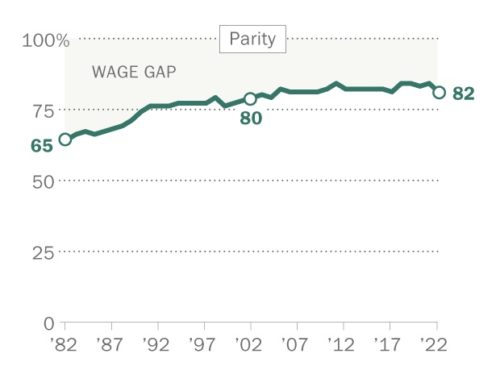The expected large-scale increase in the use of robots has prompted discussion about which jobs will become obsolete as society becomes more automated.
It’s an issue that dates back long before computers were invented but that is leaking into more fields as machines become more capable.
Carl Frey and Michael Osborne, in a February 2013 article, “The Future of Employment: How susceptible are jobs to computerization,” studied 702 industries and concluded that over the next two decades, 47 percent of U.S. workers’ jobs were at risk of automation.
Each additional robot put to work in the U.S. economy reduces employment by an estimated 5.6 workers. Some of the world’s biggest companies, such as Amazon, FedEx and General Motors, are spending billions of dollars to build robots to replace human workers. Experts predict that the number of robots in the U.S. will quadruple by 2025.
Frank Tobe, in a July 2017 article, cited a Boston Consulting Group projection that the global market for robotics would reach $87 billion by 2025.
We are talking about industrial robots, which are defined by the International Federation of Robotics as “an automatically controlled, reprogrammable and multipurpose machine.” In other words, they can perform several tasks, including welding, painting, assembling and handling materials.
Why are companies hell-bent to automate? It’s just plain cheaper. As Edward Rensi, a former McDonald’s chief executive, said in an appearance on the Fox Business Network in 2016, “It is cheaper to buy a $35,000 robotic arm than it is to hire an employee who is making $15 an hour bagging french fries.”
Jobs that do not require as much human analytical thought are more vulnerable because they are easier for machines to handle.
According to a September 2017 CNN article, “Robots: Is your job at risk?” some 7.5 million retail jobs are at risk from automation in the next decade. Robert Hetu wrote: “Retail is going through this existential crisis. There is a need to eliminate many of the manual processes that retailers just lived with for decades.”
CVS has installed self-checkout equipment in 448 stores. In December, Amazon introduced a new, high-tech convenience store called Amazon Go, which has no checkout lines or cash registers. Cameras keep track of each purchase and the customer’s account is billed automatically. Amazon bought Kiva Systems in 2012 to improve the productivity of its warehouses and fulfillment centers. Its warehouses have robots that can fetch ordered products to be shipped.
Self-driving trucks represent real job threats. In April 2017, Vivek Wahdwa, author of “The Drive in the Driverless Car,” estimated that almost 5 million driving jobs will be lost over the next few years.
And automation’s effects extend beyond what might be considered tasks ripe for robotic replacement.
At what turned out to be the end of my career, I was an institutional bond salesman for Lazard Freres. Our clients expected us to communicate primarily through email over a Bloomberg terminal. The Bloomberg terminal gave portfolio managers the ability to access real-time market information online rather than needing to speak to salesmen via the telephone. In addition, the Bloomberg terminal enabled salesmen to provide more information to more customers than they could with a telephone, the traditional means of communicating.
That all sounds good but, for me, articulating ideas primarily through email had several problems. First of all, I did not find it productive or emotionally rewarding to send out email messages, especially since clients rarely responded. Secondly, I believed that only by verbal conversation could I articulate the nuances of my fixed-income ideas.
Because of my frustration, I retired early. Both the clients and I lost out. I lost income, but the clients failed to receive our firm’s research ideas, which I believe were valuable.
Originally published in the Sarasota Herald-Tribune



